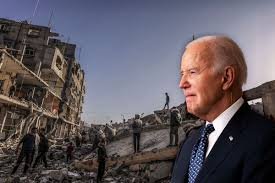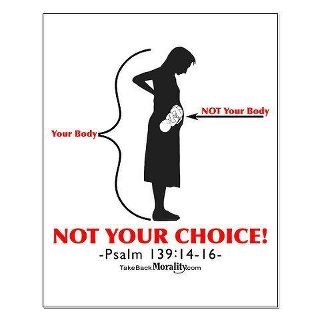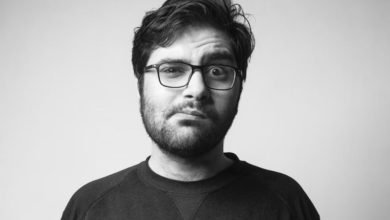Banning Alcoholic Beverages on Flights Is (Still) a Really Bad Idea
At a Senate subcommittee hearing in the summer of 1957, South Carolina Sen. Strom Thurmond sought to protect Americans from something he regarded as a serious social threat.
“Flying saloons are a social problem,” Thurmond thundered before the aviation subcommittee.
By “flying saloons,” Thurmond was referring to passengers being allowed to imbibe alcohol on flights.
Thurmond, a Democrat who joined the Republic Party in 1964, was heading up a movement to ban alcohol on both domestic and foreign flights. He was joined by Oregon Sen. Richard Lewis Neuberger, a fellow Democrat who also had introduced legislation to ban alcohol on flights.
Smelling trouble, airlines had already taken action, limiting passengers to no more than two 1.6-oz. drinks to head off a potential ban. But that didn’t go far enough, Thurmond and Neuberger argued.
Though the two Senators could not have been more different—Thurmond was a conservative from the Deep South; Neuberger a progressive journalist who wrote for The New York Times before and after World War II—they had one thing in common: they were both teetotalers who were inclined to ban things they didn’t like.
Booze Bans Are Back (Sort of)
Despite the efforts of Thurmond and Neuberger, the booze ban on flights never materialized and airlines have continued to serve drinks ever since with few exceptions. (One of those being 2020, when airlines stopped serving alcoholic beverages because of the coronavirus.)
Decades later, however, there is once again discussion about whether serving drinks on flights is appropriate because of the rise of a new phenomenon: air rage. While it’s true becoming angry on planes is nothing new, data show an astonishing increase in reports of bad behavior on flights this year.
“Since the beginning of [2021], the Federal Aviation Administration has reported a sharp uptick in the number of passengers behaving badly,” Stephen Mihm, a professor of history at the University of Georgia, recently wrote in Bloomberg. “In a typical year, the FAA logs between 100 and 200 incidents. In the first three months of 2021, it reported a whopping 1,300, despite the fact that the number of passengers was still well below normal levels.”
Precisely why there has been an explosion of reports of bad behavior is not exactly clear, but alcohol is suspected by some of being the culprit.
“It’s difficult to account for this recent uptick, but it’s hard to dispute that air rage has become a growing problem,” Mihm says. “The usual explanations—shrinking legroom, alcohol, and flight delays–have merit.”
Airlines are taking these claims seriously. The unruly behavior prompted two major airlines—Southwest and American—to suspend its alcohol service (at least in the economy section).
That decision was reached following a high profile incident on a Southwest flight that caught national attention when video surfaced of a brawl between a flight attendant and a passenger, which reportedly resulted in the flight attendant getting two teeth knocked out.
Are Alcohol Bans Helpful?
Airlines of course have every right to limit drink service (in contrast to Neuberger and Thurmond, who sought to use federal coercion) if they choose. They are private companies, after all.
Yet there’s little reason to believe that banning alcohol service will decrease instances of “air rage.” For starters, passengers in 2021 have proven just as sneaky as passengers in the 1950s (and Americans in general in the 1920s) at circumventing drinking prohibitions.
News reports from the 1950s show that the two-drink limit airlines imposed had a predictable consequence.
“I have found an increasing number of passengers bringing bottles on board,”’ flight attendant Martha Ann Alexander testified to the Senate committee.
It seems passengers today are no less crafty. The FAA recently pointed out that many altercations on flights involved passengers who brought their own booze stash on-board. A recent Forbes article explored the details.
“Two passengers on a Jan. 4 JetBlue flight were disruptive and allegedly drank from their own personal alcohol, leading into altercations with attendants,” Forbes reports. “They were escorted off the plane by police and fined $31,750 and $16,750.”
The article continues:
A passenger on a Jan. 14 SkyWest flight from Arizona to Texas also reportedly drank “multiple 50 ml bottles of his own alcohol”, and became so belligerent that two off-duty law enforcement officers had to wrestle him into his seat; this passenger was later fined $14,500. In Feb., another JetBlue flight was disrupted when a flight attendant told a passenger they could not drink from their own mini bottles of alcohol. The disturbance escalated, and the passenger was fined $18,500.
Is this the only plausible reason for the uptick in air rage? Of course not. Mihm suggests “seat inequality” may be to blame, pointing out that a 2016 study suggested that economy passengers were resentful of passengers in first-class.
“[The study] found that the presence of a first-class section made it 3.84 times more likely that someone in economy class would act out,” he writes. “This rage-inducing effect was equivalent to delaying a plane by 9 hours and 29 minutes.”
Mihm sees air rage as a new form of “class warfare.”
Other factors could also be at play. Forbes writer Elva Ramirez notes that FAA data show a great many of the 2,500 “unruly behavior” reports the agency has received since the beginning of 2021 have also stemmed from—in addition to passengers smuggling alcohol—”federal mask-wearing rules.”
This would suggest that Americans, following a year in which they were constantly told what to do, may simply be rebelling against rules they see as arbitrary or unjust.
Bans: A Tricky Business
What exactly is behind the rise of “air rage” reports is unclear. But the famed economist Milton Friedman once noted that the problem with prohibitions is they are attempted cures that often “make matters worse.”
This isn’t to say airlines can’t ban whatever they choose. It’s only to recognize that bans are implicitly designed to control the behaviors of others, and that can be a tricky business.
“Banning the transport of stuff that people desire is much easier said than done and may well produce more victims than the stuff itself,” Larry Reed observed.
This appears to be the case with the effort of airlines to reduce disruptions by cutting off passengers from alcoholic beverages.
A careful reading of the details of the FAA report suggests that passengers being served alcohol are not the root of the problem. The disruptions appear to stem largely from passengers smuggling their own booze onto flights—in large quantities, no less.
In other words, it seems like alcohol bans are what is causing many of these disruptions, since instead of purchasing a drink or two at $11 a pop, passengers are getting shined up on their own product, resulting in confrontations with flight attendants, who no doubt have been tasked with the thankless job of separating passengers from their illicit spirits.
The behavior of passengers, of course, is in no way excusable.
But it does reveal how little we’ve learned about human behavior since the 1950s, when Strom Thurmond and Richard Lewis Neuberger sought to protect Americans from the danger of having a cocktail to relax during flight.
This article was originally published on FEE.org




